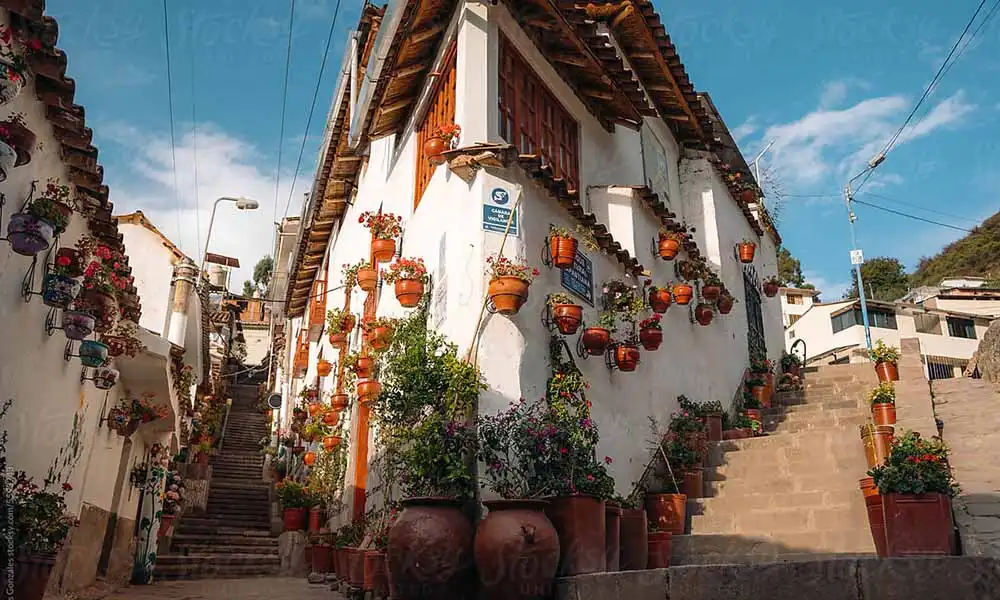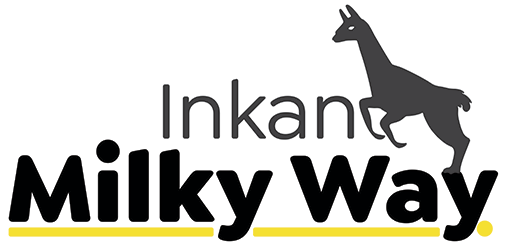
The history, past, and traditions of Cusco are not only found in the halls of its museums, the stone walls of its archaeological parks, or the popular festivals that honour the sun, the earth, the saints, and the virgins who perform miracles from the altars of colonial churches.
These stories of Incas and invaders, the Andean and Hispanic past, and the traditions that make those born here and visitors from afar feel alive, praying and dancing, spill out from centuries-old buildings and museum exhibitions to take to the streets.
And there they are, in the Historic Centre, waiting for you to “take you” back to the Inca and colonial past that endures and is preserved in today’s Cusco, the Cusco of always. Yes, in those cobbled streets that wind between pre-Hispanic walls and colonial buildings, you will feel the mystique of the city that was the centre of the world.
That is what its founders, the “Children of the Sun,” the highland men who forged the greatest empire in this part of the planet, believed. The Spaniards who turned the so-called “Archaeological Capital of America” into the epicentre of the invasion that would become the Viceroyalty of Peru also understood this.
As you walk through its traditional streets, you will discover that the past lives on in Choquechaka, Asnoqch’utun, Hatun Rumiyoq, and all the paths that lead to a cobbled square, a centuries-old temple, or a monumental colonial house.
Stroll through Cusco so its streets can tell you stories and reveal the myths, legends, and even the whispers that have circulated for centuries in the Historic Centre of the Inca capital and the colonial city, which was declared a UNESCO World Heritage Site in 1983.
If you want your steps to decipher the distinctive characteristics and even the hidden “messages” of the traditional streets of Cusco, you must read carefully what we will share next:
Contents
What are the traditional streets like?
Cobblestoned and generally narrow, some streets rise while others descend. Almost all lead to squares, churches, and grand houses. Several were designed by Inca architects, and many are flanked by colonial buildings, built upon the stone walls of the “Children of the Sun.”
With their Andean and Western nuances, narrow pre-Hispanic alleyways, irregular stones in the pavement, and the interweaving of urban spaces of great archaeological, historical, and artistic value, the arteries of Cusco’s Historic Centre are incomparable, unique… a treasure of humanity!
In these streets—bordered by intricately carved stone doorways and wooden balconies—nostalgia does not roam. On the contrary, the heart of Cusco beats and vibrates. It is a meeting place, bustling with life. Artisan galleries, museums, restaurants, pubs, and cafés infuse it with colour and movement, adding a cosmopolitan touch.
Now you know. You will not only connect with the past of an Andean city that fuses indigenous and European elements, but you will also discover a vibrant present that reveals that, in many ways, Cusco continues to be the centre of the world.
Guide to Traditional Streets
Not all of them are included, but in this guide, you will find information about seven traditional streets in the tourist destination that awaits you on your next holiday.
Hatunrumiyoc
On a splendid Inca wall where the stones fit perfectly together without the need for mortar, a 6-ton block, one metre high and 1.2 metres long, has become a symbol of the city and the architectural skill of Cusco’s founders.
The interest it generates is explained by the 12 carved or sculpted angles created by its builders, allowing the block to fit into one of the exterior walls of the palace of Inca Roca, as if it were a massive piece of a puzzle.
If you want to admire the Stone of the Twelve Angles, head towards Hatun Rumiyoq Street, one of the most traditional in the Historic Centre. Easily accessible from the main square, its name in Quechua translates to “the street that has large stones.”
To see the iconic stone, you won’t spend a single sol or dollar; you’ll only need to invest a bit of your energy and time. Be patient, as groups of tourists often gather in front of the wall that once was the residence of Inca Roca, which now houses the Archbishop’s Palace and the Museum of Religious Art.
Ccoricalle
As you stroll through the Historic Centre, your imagination runs wild. When that happens, you can “play” with the names of the streets to create “little” stories with their respective morals. Here’s one for you: to amass a great amount of gold, one must first walk up the Slope of Bitterness until reaching Ccoricalle.
Truth or myth? What’s certain is that in Cusco, there’s a tale that in one of its traditional streets, there was a house whose basement was filled with gold dust. The rumour emerged in 1866 (the republican era) and was so loud that the street began to be called Ccoricalle.
Beyond the stories and morals, from Ccoricalle—which runs parallel to Suecia and Tecsecocha streets—you’ll have a magnificent view of the city centre.
Asnoqch’utun
You don’t need to be an expert in Quechua to notice that the name of this street is related to donkeys, one of the pack animals that arrived in the Andes during the conquest. The mystery lies in uncovering the meaning of the rest of the word.
Learning various words in Quechua, one of Peru’s official languages, is part of the experience of exploring Cusco. In this case, the street name translates to “snout (ch’utun) of a donkey,” which might be explained by its location.
Asnoqch’utun, located opposite Pantaq Street, is notable for the stairs leading to the San Blas market. It’s likely that, on those steps, more than one heavily laden donkey has “gone snout-first” after a spectacular fall or slip.
What do you think? Regardless, take the opportunity to explore the market and perhaps buy a few items. Prices are reasonable, and you’ll help boost the local economy.
Pantaq
Its name in Quechua translates to Spanish as “mistaken” or “a person who makes errors.” This curious name is explained because Pantaq is a dead-end alley; thus, those who enter with the intention of taking a shortcut “make a mistake.”
But it’s not a serious error. On the contrary, the lost passerby will have a great time in the affordable restaurants, shops, and hostels that bring life to this charming corner of the city.
Atoqsayk’uchi
It is one of the narrow, cobbled, and inspiring little streets of San Blas, the artisan district that has sheltered great masters such as the imaginer Hilario Mendívil, the sculptor Edilberto Mérida, and the creator of the Cusco children Manuelito (Jesus), Antonio Olave.
In this street, whose name translates to “the place where even the fox gets tired,” you will find the best of local craftsmanship. Take advantage of your walking journey to explore the shops and galleries, where you can buy everything from jewellery and paintings to alpaca sweaters and shawls.
K’uichipunku
More Quechua lessons: Punku means door, and kuychi refers to the rainbow god in Andean cosmology. The Rainbow Door is the name of this iconic and popular street that leads to Avenida El Sol and the magnificent temple of Qoricancha.
Due to its strategic location, K’uichipunku features hotels and restaurants, along with other businesses related to tourism. It’s a great place to stroll and also to stay, as it will facilitate your movements in and out of the Historic Centre, the most attractive area of the city.
Choquechaka
The Choque brothers were owners of a property called Urupampachayuq. They were not hatunrunas (common folk); they were orejones (descendants of Inca rulers) with power and resources, and thus ordered the construction of three bridges over the Tullumayu stream.
These bridges (chakas in Quechua), made of wooden planks, not only facilitated access to the Choque estate but also came to define an area of the city that breathes culture, home to the Museum of Contemporary Art and the Centre for Traditional Textiles of Cusco.
But let’s return to the past. During the colonial period, Choquechaka was a commercial and residential area inhabited by wealthy Spanish families. That’s not all; various religious institutions beautified the urban landscape of Almudena, as it was renamed during that time.
Things to Keep in Mind
- Walking will allow you to better appreciate Cusco’s architecture and feel the unique atmosphere of the city.
- Exploring markets, such as the central market of San Pedro or San Blas, will bring you closer to the culture, craftsmanship, agricultural production, and local gastronomy.
- The Plaza de Armas isn’t the only one you should visit. San Francisco and Regocijo, for example, are two spaces you will love.
- If you have questions or need help finding a place, don’t hesitate to ask the locals. They are very friendly to visitors.






